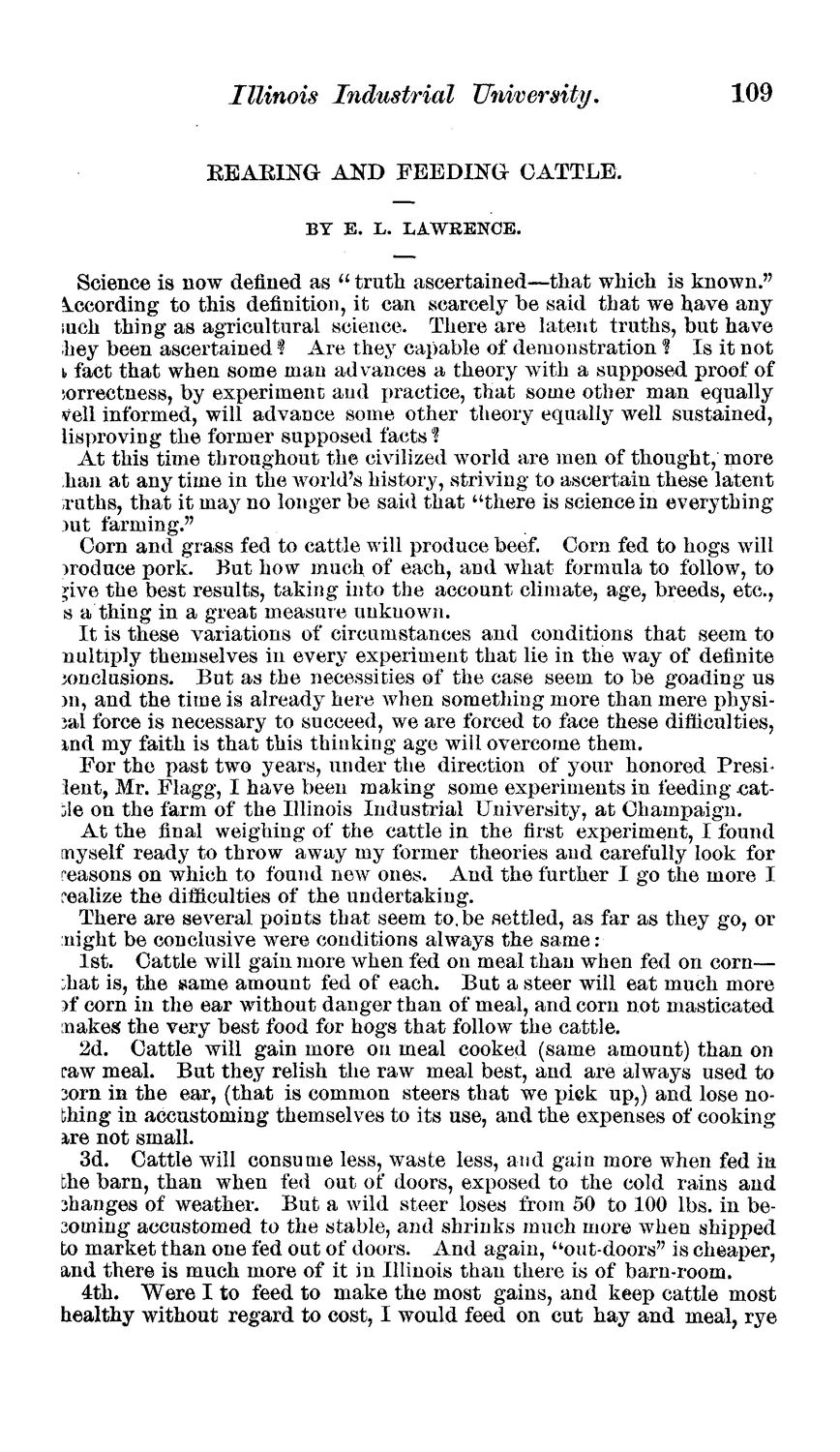| |
| |
Caption: Board of Trustees Minutes - 1874
This is a reduced-resolution page image for fast online browsing.

EXTRACTED TEXT FROM PAGE:
Illinois Industrial University. 109 KEABIKG AND FEEDING CATTLE. BY E. L. LAWRENCE. Science is now denned as " truth ascertained—that which is known.'7 According to this definition, it can scarcely be said that we have any iuch thing as agricultural science. There are latent truths, but have hey been ascertained f Are they capable of demonstration % Is it not b fact that when some man advances a theory with a supposed proof of correctness, by experiment aud practice, that some other man equally veil informed, will advance some other theory equally well sustained, lisproving the former supposed facts'! At this time throughout the civilized world are men of thought, more han at any time in the world's history, striving to ascertain these latent truths, that it may no longer be said that "there is science in everything 3ut farming." Corn and grass fed to cattle will produce beef. Corn fed to hogs will produce pork. But how much of each, and what formula to follow, to >ive the best results, taking into the account climate, age, breeds, etc., s a thing in a great measure unknown. It is these variations of circumstances and conditions that seem to nultiply themselves in every experiment that lie in the way of definite conclusions. But as the necessities of the case seem to be goading us )ii, and the time is already here when something more than mere physical force is necessary to succeed, we are forced to face these difficulties, ind my faith is that this thinking age will overcome them. For the past two years, under the direction of your honored Presilent, Mr. Flagg, I have been making some experiments in feeding cattle on the farm of the Illinois Industrial University, at Champaign. At the final weighing of the cattle in the first experiment, I found myself ready to throw away my former theories aud carefully look for reasons on which to found new ones. And the further I go the more I realize the difficulties of the undertaking. There are several points that seem to.be settled, as far as they go, or night be conclusive were conditions always the same: 1st. Cattle will gain more when fed on meal than when fed on corn— uhat is, the same amount fed of each. But a steer will eat much more i>f corn in the ear without danger than of meal, and corn not masticated makes the very best food for hogs that follow the cattle. 2d. Cattle will gain more on meal cooked (same amount) than on raw meal. But they relish the raw meal best, and are always used to 3orn in the ear, (that is common steers that we pick up,) and lose nothing in accustoming themselves to its use, and the expenses of cooking ire not small. 3d. Cattle will consume less, waste less, and gain more when fed in the barn, than when fed out of doors, exposed to the cold rains and changes of weather. But a wild steer loses from 50 to 100 lbs. in beaorning accustomed to the stable, and shrinks much more when shipped to market than one fed out of doors. And again, u out-doors" is cheaper, and there is much more of it in Illinois than there is of barn-room. 4th. Were I to feed to make the most gains, and keep cattle most healthy without regard to cost, I would feed on cut bay and meal, rye
| |